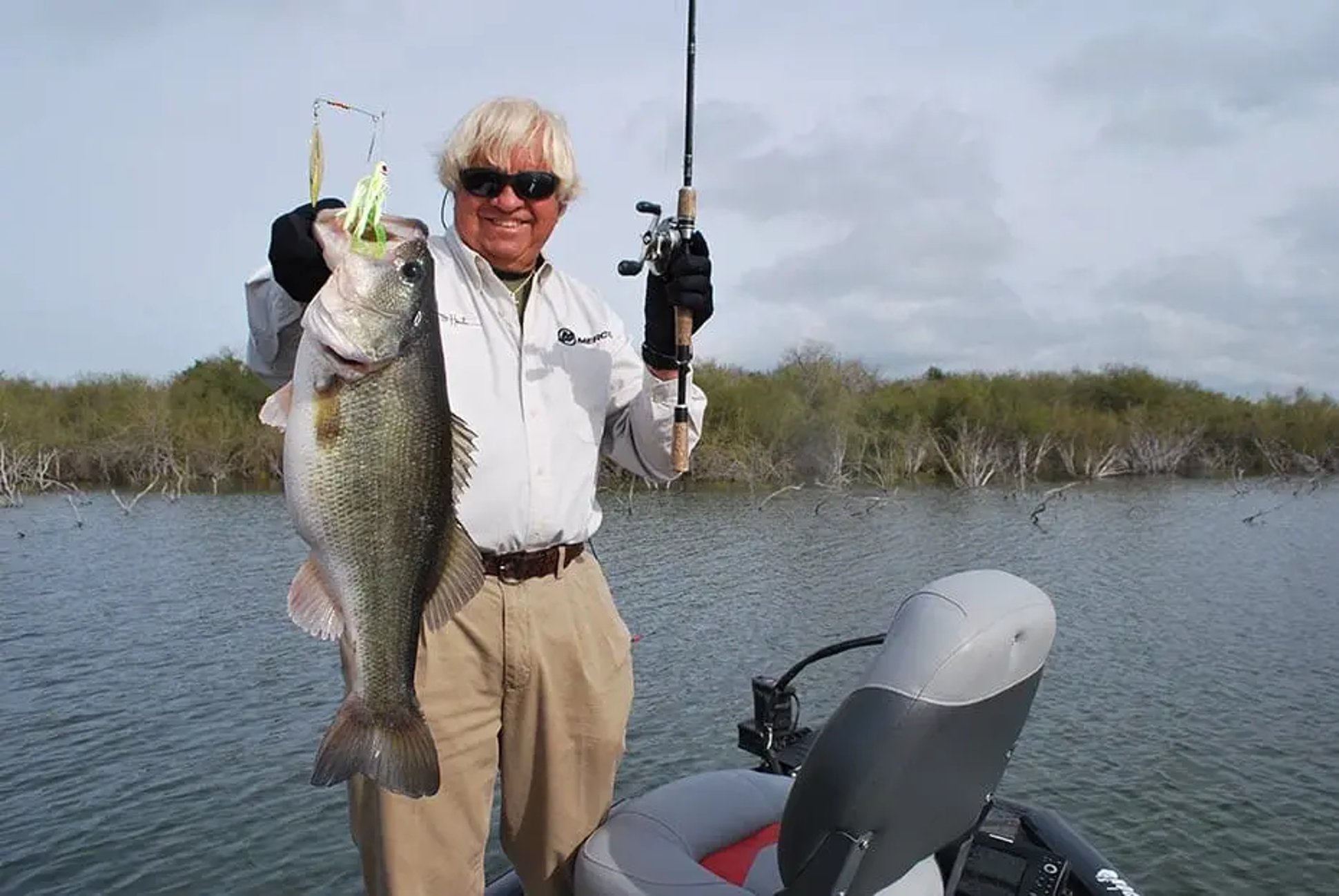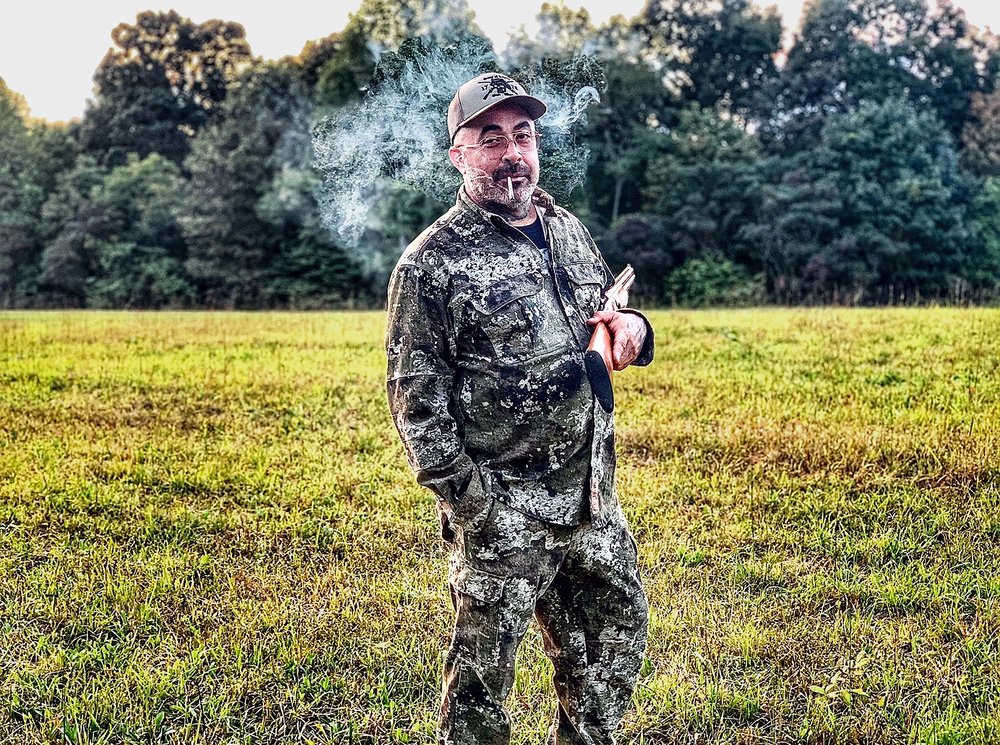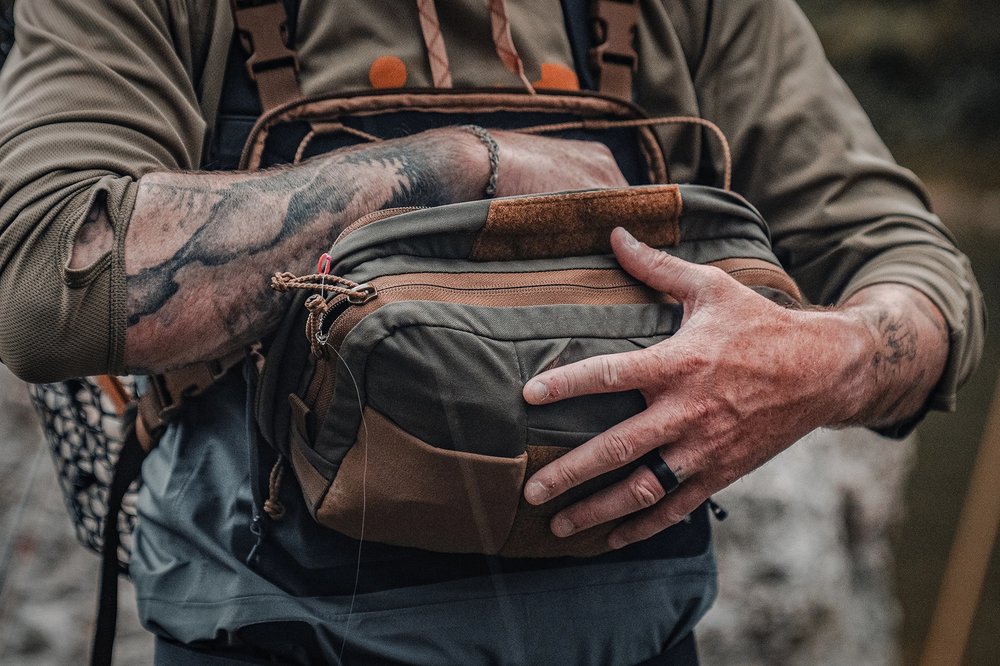Unlike the art of fly fishing revered for its simplicity for use of the long rod and nymph to pursue quarry, the high-tech fast-paced world of largemouth bass fishing is quite the opposite. From the advent of digital side-scan fish finders to computer-generated images wrapped around lifelike lure molds, blasting across lakes in 250 horsepower outboards is the ever-evolving industry of professional bass angling. Its reigning king Kalamazoo Michigan native Kevin Van Dam, or KVD as he is better known, began his professional career at just 23 years old in 1992 by stunning the tournament world to become the youngest angler to ever win the B.A.S.S. Angler of the Year award. Over the next two decades, he dominated the field while crowding his mantle with four Bassmaster Classic championships (tied only by Rick Clunn), seven B.A.S.S. Angler of the Year awards, 27 overall wins, and 120 top ten finishes amassing over $6.8 million as the sports all-time money winner. Universally accepted as the greatest bass fisherman of all time, KVD recently sat down with Hook & Barrel to talk a little old school vs. new school.
Hook & Barrel: Kevin, how has new technology changed professional bass fishing?

Kevin Van Dam: The greatest fishing innovation, in my estimation, is electronics, specifically the advent of GPS mapping and side imaging. They’re the single biggest thing to level the playing field in competitive fishing. To be able to have a better vision of what the bottom of the lake looks like and to find fish then later return back to that exact area is really amazing. For example, years ago with traditional sonar you only could detect a small cone beneath the boat whereas today’s technology allows you to scan and map all around the boat out to 100 feet with exceptional detail. The Hummingbird Lake Master mapping system I use can display the entry and exits of creek channels, the distance and depth of reefs, rock piles, drop-offs, and map contours of the bottom that you can actually adjust if the water levels fluctuate by highlighting shallow areas and get the big picture of a lake without ever even going to it. With mega side imaging, you can distinguish in high resolution say a cluster of crappie in a brush top along with a bass sitting right next to them. Anglers today have such better equipment than even 10 years ago from advanced fluorocarbon and braided fishing line to computer -aided lure design with internal weight systems to make better baits right from the get go. There are very few lures that were made 20 years ago that are still in anyone’s tackle box today. Even my boat has changed in just the last 10 years. I have four graphs, two on the front deck to view while fishing and two on the console for when I’m running. Everything has changed from the hull design and storage layout to the trolling motor and shallow anchor system. I have one boat system that can be controlled with just a handheld remote.
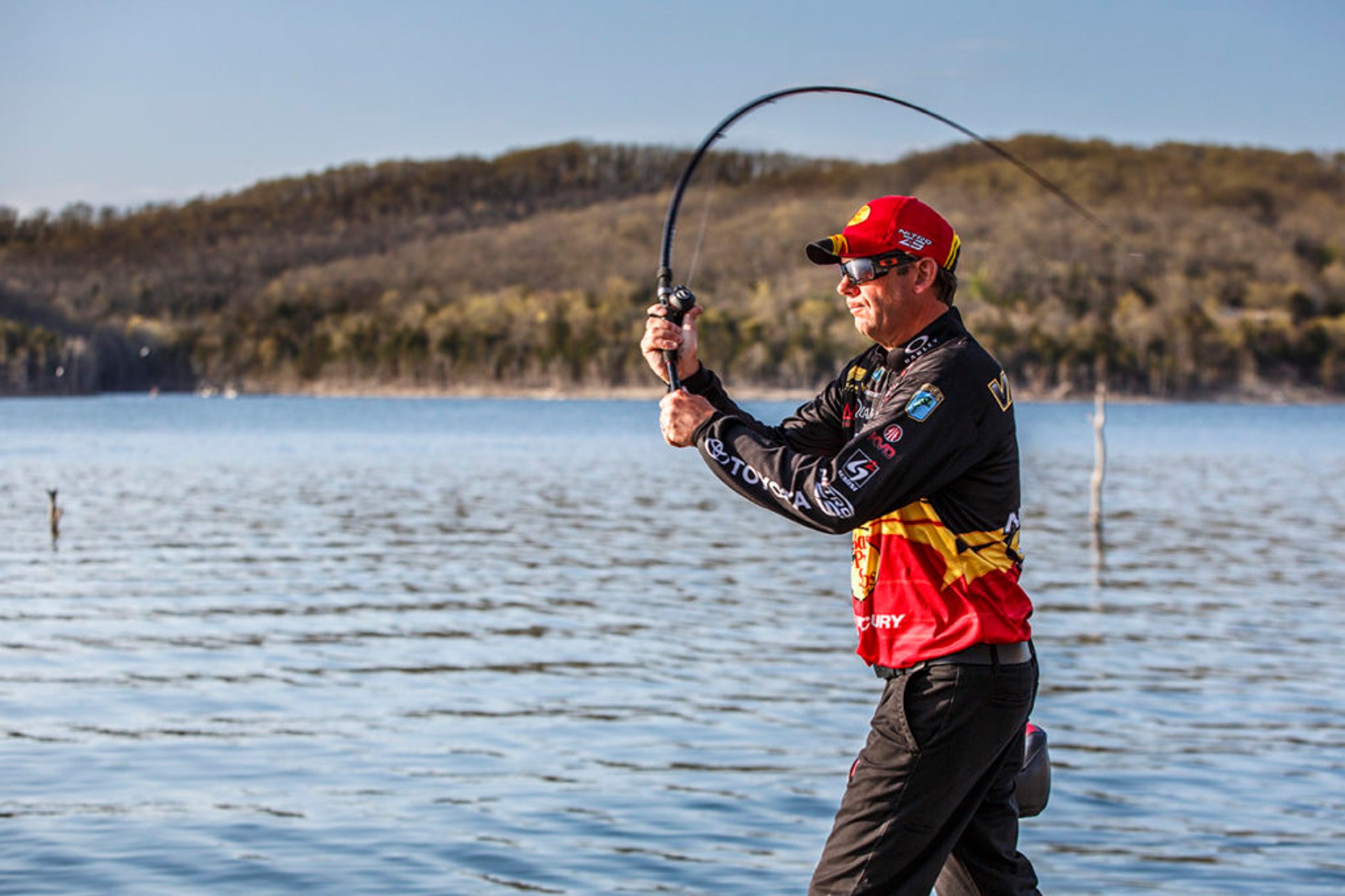
H&B: What old-school tricks does KVD like to use?
KVD: Buzz baits are old school lures that have gotten really big again. I like the plopper-style baits with the toad bodies that are much more efficient than the old skirted ones we started out with back in the ‘90s. In the end however, there is one thing the new age angler can’t overcome with technology alone and that’s time on the water. Regardless of everything you have to work with in today’s age, you have to know how to react when conditions change like a flood event or weather front. We’ve seen it all, and actual experiences on the water are what separate the veteran pros from the amateurs. Old school guys like Jimmy Houston actually saw Lake Fork the year it first opened! So information, technology, internet and YouTube videos definitely can shorten the learning curve for new anglers, but nothing trumps time on the water and experience.
H&B: Kevin, what’s your best advice for success?
KVD: The best advice for success is that there is no substitute for hard work and dedication. So many anglers get caught up in this industry that feeds off people looking for an easier way. Whether it’s the next big invention or magic bait that’s going to catch the most fish, it’s just human nature to look for that shortcut. But I’ve always said the harder I work, the luckier I get, and I don’t believe in luck at all. The people who are the most successful are the ones who do their preparation on and off the water and stay focused. The balance is to make sure you enjoy it. You can get burned out in the grind of tournament angling if you’re not having fun, and it becomes really hard to stay dedicated to continue putting in the work. So not everyone is destined to be a bass pro, but bass fishing is a great sport that you can do your whole life. Jimmy and I are a true testament to that as we both share the same hard work and passion for the sport, and that’s what it takes to find success in our industry.
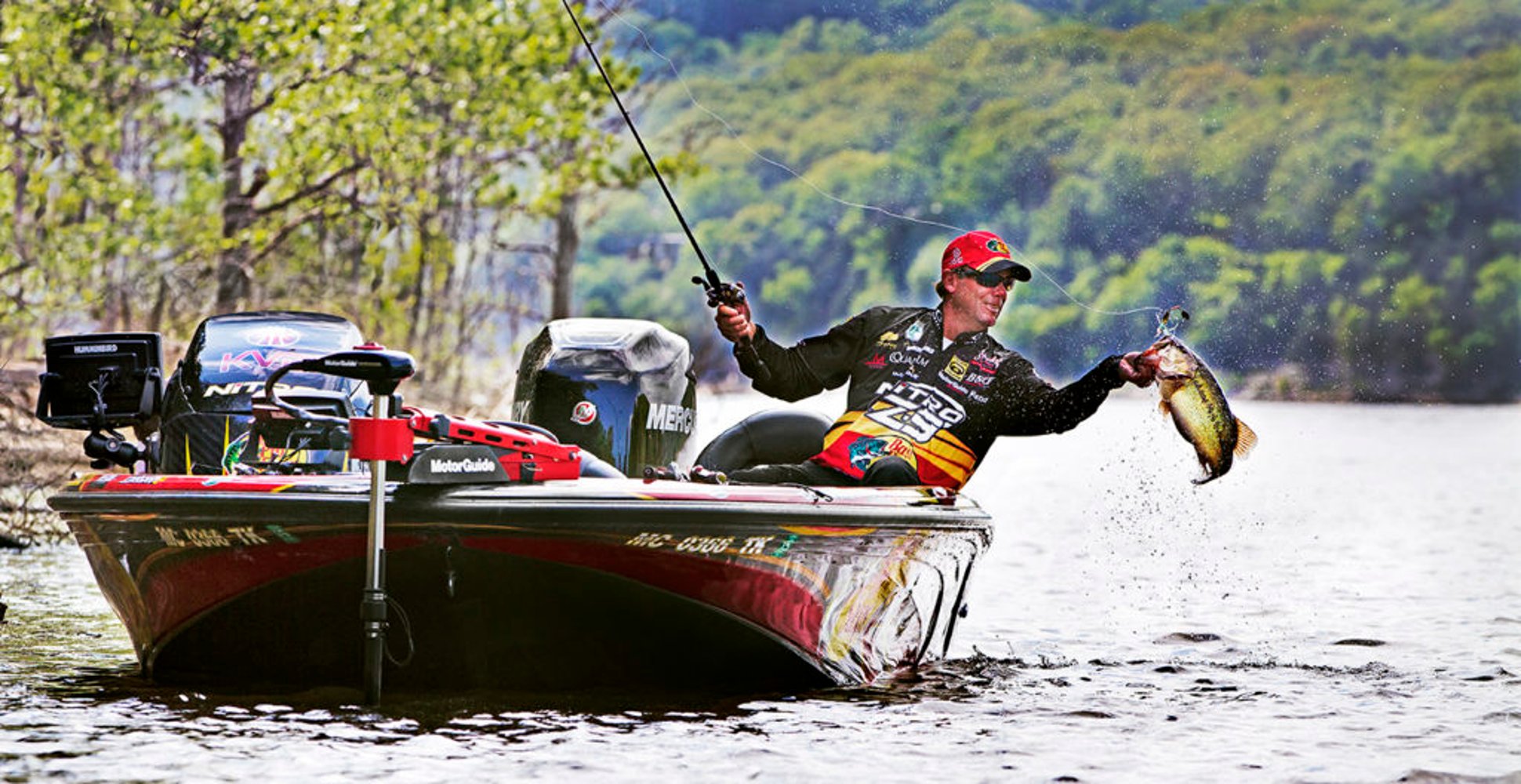
Old School—New Rules
Jimmy Houston
The year was 1966. Gold sunburst clocks hung from living room walls while slim angle televisions projected a spacey new series called Star Trek. Still a year before KVD’s birth, another 22-year-old prodigy named Jimmy Houston had just won the Oklahoma State bass fishing championship as a college senior. With an infectious laugh and trademark Beatle-cut hairstyle reminiscent of a blonde Roy Orbison, the fish smooching Oklahoman would go on to become one of bass angling’s Big Three carved into its Mount Rushmore alongside fellow alumni Bill Dance and Roland Martin. Since beginning his professional fishing career, Houston has won over a million dollars in bass tournaments including 15 Bassmaster Classic appearances and two B.A.S.S. Angler of the Year titles in both 1976 and 1986 along with inductions into the National Freshwater Fishing Hall of Fame, Professional Bass Fishing Hall of Fame, and IGFA Freshwater Fishing Hall of Fame while regularly appearing on television sets as the host of his long-running Jimmy Houston Show for nearly five decades.
H&B: Jimmy, you’ve been in the business for a long time. How has technology changed the game?
JH: Technology has become so advanced in comparison to when I first started out fishing. Along with the development of monofilament line in the 1960s, we as anglers have been in a constant learning curve especially with the introduction of advanced electronics. I can remember when Carl Lowrance first invented the depth finder, which he called the Little Green Box, way back in the late ‘50s where you had to keep the boat still and hold the transducer over the side to get a depth reading. Today we have high-resolution touchscreens with sidescan, mapping, and navigation technology like Garmin’s new Panoptix LiveScope where I can see my lure and the fish along with structure on live real-time scanning sonar images. It’s just incredible, I’m even attending a course just to learn how to use the thing. There’ve been so many advancements in fishing technology since I started out 50 years ago, but without a doubt, the electronics have been the game changer.
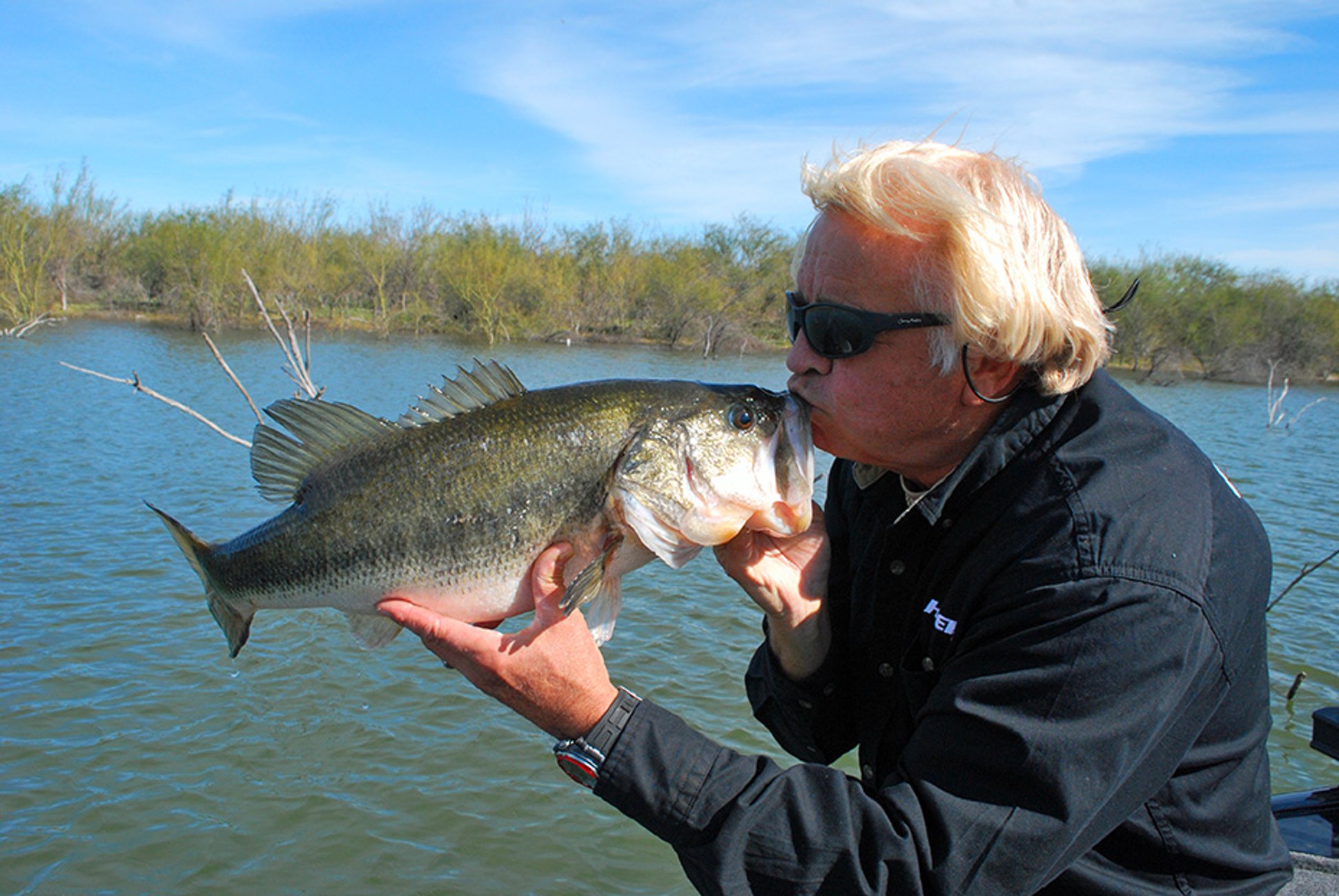
H&B: What new-school tricks does Jimmy Houston like now?
JH: It’s funny you ask that, because I’ve noticed over the years that a lot of techniques the younger guys consider new school we were using in some form or another decades ago that have just been rediscovered. For example, the drop shot rig was just a catfishing rig, and the hot new shakey head bait was something we were throwing back in the ‘70s we called a jig-n-worm. This was even before worm weights had holes in them! Yeah I’m talking real old school. We used to rig crème worms on weighted jig heads as back in those days it was believed that bass ate the worm tail first so we would let the fish take it and run with it before setting the hook but later learned that wasn’t the case. Eventually a guy from Texas drilled a hole in the weight so the line could feed though it and voila! You guessed it created the Texas rig we’re still using today!
H&B: What’s Jimmy Houston’s best advice for success?
JH: Learn how to become proficient with one technique. Go fishing as often as you can to develop the mechanical skills like casting accuracy and situational awareness that is so important in tournament fishing. Practice, practice, practice. Regardless of the technology, the more time on the water you actually have to employ the techniques, the better you will become. Fisherman today have so much more of an advantage with accessing information from the internet and YouTube, but a good caster is still a good caster. No matter how advanced the technology you are using, it won’t cast that lure where it needs to go for you. Learn the information, then apply that knowledge using as much time on the water you can get day in and day out.
embed